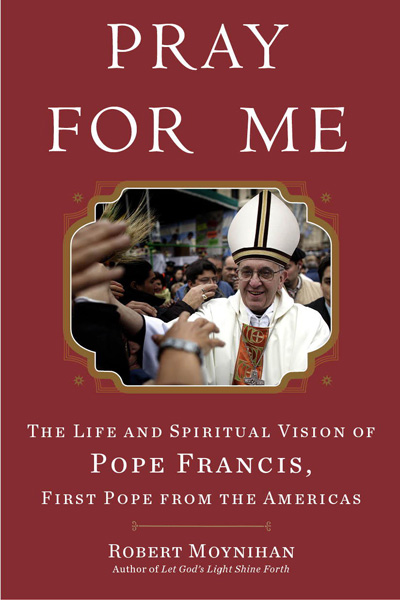
Pray for Me, The Life and Spiritual Vision of Pope Francis, First Pope From the Americas.
In Pray for Me : The Life and Spiritual Vision of Pope Francis, First Pope From the Americas, author Robert Moynihan offers the reader an inside look at the events of the days and weeks after Cardinal Jorge Mario Bergoglio emerged onto the balcony overlooking St. Peter’s Square as Pope Francis. The book is divided into three parts and includes a biographical section and a section of various topics with Pope Francis’ views on each.
The most enjoyable section of the book for me was the first (not to detract from the other sections at all—it was simply my favorite). This section gives the reader a behind-the-scenes look into the events transpiring in Rome beginning with the moments just before we heard the words “Habemus Papam!” (“We have a Pope!”) The chapters of this section are laid out in a journalistic format, beginning with Pope Francis’ first moments on the balcony at St. Peter’s Basilica on March 13, 2013, up to the Palm Sunday Mass on March 24. The events are detailed in a manner that only someone “on the ground” could present. Moynihan was present for all of these events and managed to assemble this book for publication and release a mere six weeks after the events transpired. This in itself is a truly incredible feat.
Events chronicled within this section include Pope Francis’ first Mass and homily, first meetings with cardinals and journalists, the Inaugural Mass of the Pope, receiving of foreign delegates and the Palm Sunday Mass of 2013. Each chapter was well detailed, including what Pope Francis said and did on a nearly day-by-day basis during this time period. This first section of the book would serve well for those curious about these historical events.
The second section of the book offers the reader a brief but informative 40-page biography of Pope Francis. This covers his childhood years, his ordination to the priesthood, his appointment as bishop, his appointment as cardinal and his election to the papacy. Although this is not a very large section, the events were well-covered and provided a good overview of the life of our current Pope. One feature in this section that really caught my interest was titled “Words of Inspiration.” In two pages, Moynihan details for the reader book recommendations Pope Francis has made to those who placed themselves under his spiritual direction over the years. Lastly, in this section five spiritual guides of Pope Francis are covered (the Prophet Jonah, Mary, St. Ignatius of Loyola, Don Luigi Giussani and St. Francis of Assisi) as evidenced through his various writings and conversations through the years.

Pope Francis.
The third and final section of the book covers 40 topics and the view of Pope Francis on each. The various topics covered include creation, humanity, the Church, faith, hope, love, and eternal life. This section will serve nicely as a source of meditation on these subjects and provide the reader with a better understanding of where Pope Francis stands on these issues.
Moynihan has provided everyone a great service. He has opened up the window into a moment of time which the average person was unable to witness. This book can be reread at any time if someone wants to reflect upon those weeks that transpired prior to Easter 2013. The additional biography and reflections on topics were just an added bonus to me, making this book that much better. The book itself and the events it was based on were so fascinating that I decided to dig into the topic a bit deeper. What follows is my interview with Dr. Moynihan, covering, among other things, what went into writing this glimpse into history.
Pray for Me is a fantastic look into the first days and weeks of Pope Francis’ papacy. How much work does it take to undertake a project of this magnitude, considering it was released a mere six weeks after Pope Francis’ election?
Robert Moynihan: I was in Rome to follow each day during the period from the announcement by Pope Benedict XVI of his resignation on February 11 to the election of Pope Francis on March 13, and through the first weeks of the new pontificate. I saw him personally on a number of occasions, and read everything he was saying, and much of what the world press was saying about him.
I was writing a series of Letters from Rome on all of these events, and I decided that the best way to interpret the new pontificate was to go more deeply into each word he spoke, each gesture he made, and then attempt to draw out from that a picture of the man and his mind, heart, and soul. That is what I did.
I then read everything I could find of what he himself had written as a bishop (his homilies in Buenos Aires) and interviews with him over the years. All of this helped provide an insight into the man and his vision for the Church and the world, his vision of the meaning of human life, and of the Christian message.
I worked “around the clock” after the election on March 13, and submitted the book at the beginning of April. It was an arduous but very exciting and rewarding task, and a memorable time in my life. I am in Rome now and following events very closely, and hope to continue to write about this pontificate as it unfolds.
I worked each day for about 18 hours, attending papal events during the day, then reading for several hours, then writing into the wee hours of the morning, then doing it again. There was no way to do this book without living the first days of the pontificate with a nearly total focus on what the new Pope was saying and doing, and what his words and actions meant. To grasp the main lines of his youth and life prior to the election, I talked to those who knew him and read everything I could, as others like myself researched his life and work and wrote about it. In this sense, I depended on the work of others, who were also working hard to understand this man and his life and vision.
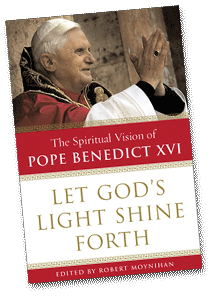
Robert Moynihan’s previous book, Let God’s Light Shine Forth (2005).
Right, Pope Benedict XVI greets Robert Moynihan, editor-in-chief of Inside the Vatican magazine, during an audience in 2009.
Being in Rome during such an historic time must have been quite an experience. Can you share any of your personal thoughts on that experience and how it affected you as a Catholic?
Moynihan: I felt privileged to be in Rome during those days. They began with a thunderclap: the announcement by Pope Benedict on February 11 that he would resign, and then the two bolts of lightning that struck the dome of St. Peter’s that evening, in a tremendous storm, a tempesta as the Italians call it, chillingly cold, and sweeping gusts of rain, at about 6 in the evening. During February, the focus was on Benedict and his resignation. During March, the focus was on the conclave, and the choice of the cardinals. Once their choice was announced, the task was to understand what it meant. I was filled with a sense that the times were “historic” for the Church, and I still believe today that the Church passed through something very extraordinary with the resignation of a living Pope, and the election of a Jesuit from the New World who is deeply Marian, deeply Christo-centric, deeply in love with Christ and his Church, and with the poor and marginalized of our world, to whom his heart goes out in a great wave of Christian charity. I only regret that I did not have more energy and strength and wisdom to enable me to follow even more effectively the events of those days. But I am grateful that I was in Rome to watch the events unfold. I will try to be ready to recount what the coming weeks and months will bring.
You have also written a book on Pope Benedict XVI entitled Let God’s Light Shine Forth: The Spiritual Vision of Pope Benedict XVI. Could you give our readers a brief synopsis of that book and how it came about?
Moynihan: I also wrote a book on Pope Benedict, whom I know well, in the days after his election in 2005. I used material from my own interviews with him in the 1990s, in that 2005 book. I felt I captured the essential vision of the man, and I still feel that book was one that, in a few pages, gave a deep insight into Benedict, one of the most misunderstood men of our age.
He has a great and profound vision of the dignity of man in light of the Christian “fact,” and he analyzed the malaise of our modern world as effectively as any other thinker of our time, perhaps more effectively. But his soaring vision and his commitment to the truth he held so firmly, led him to encounter many enemies, who eventually impeded his work as Pope and made it impossible for him to continue. But he is in contact with Pope Francis, and in this sense, this new pontificate is an extension, in a new key, of what Benedict did from 2005 to 2013. We will see this more clearly in the months ahead.
Time for my signature ending question. My passion is books. What is currently on your bookshelf to read?
Moynihan: On my bookshelf? A little book by Cardinal Marc Ouellet, The Christian Vocation to Marriage and Family in the Mission of the Church (in Italian), in order to better understand the great issue of marriage in our time; and a book by Gianni Valente, a friend of Pope Francis and of Pope Benedict, and my own friend, entitled Ratzinger at Vatican II, also in Italian. I also am continuing to read Pope Benedict’s three books on Jesus, and thinking of writing my own commentary on those three great books.

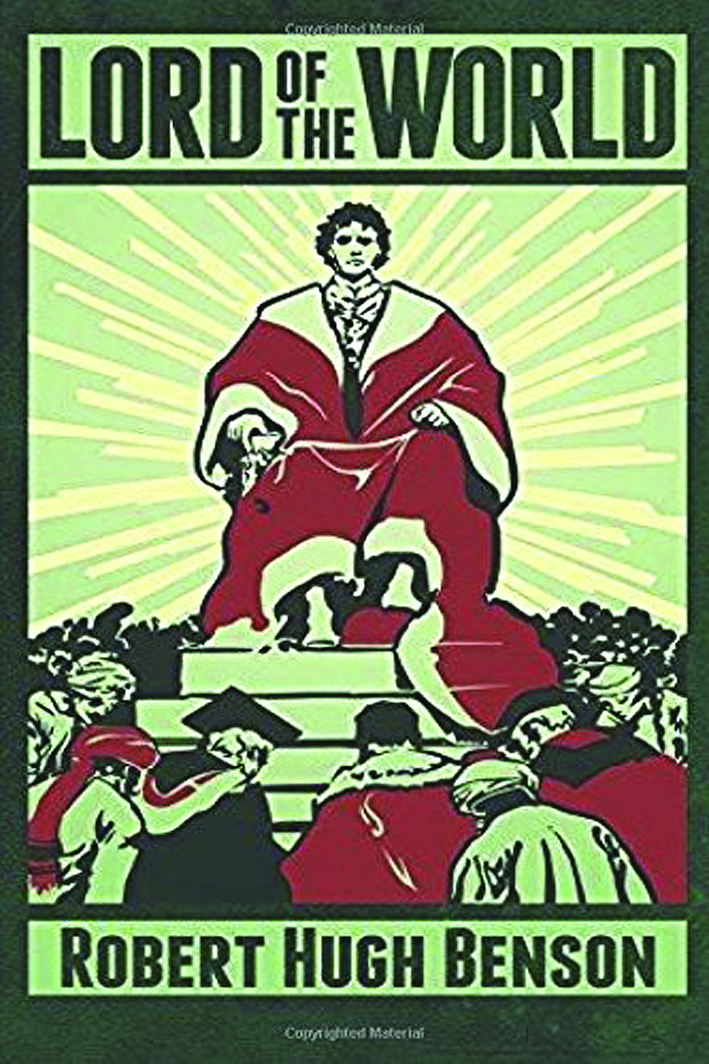
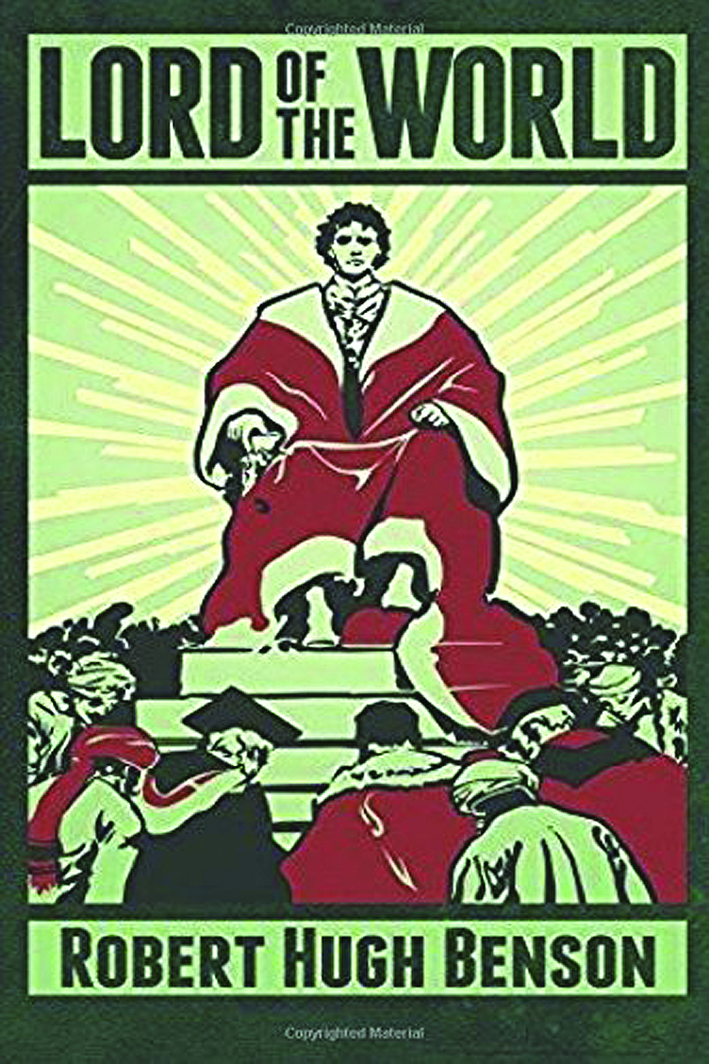
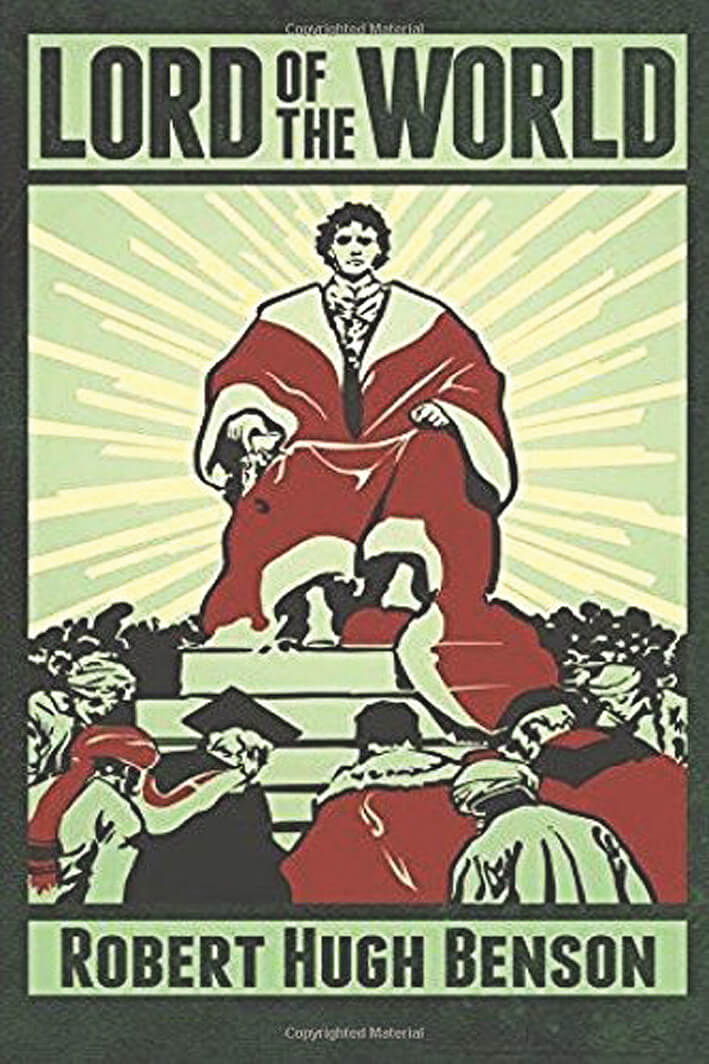
Facebook Comments